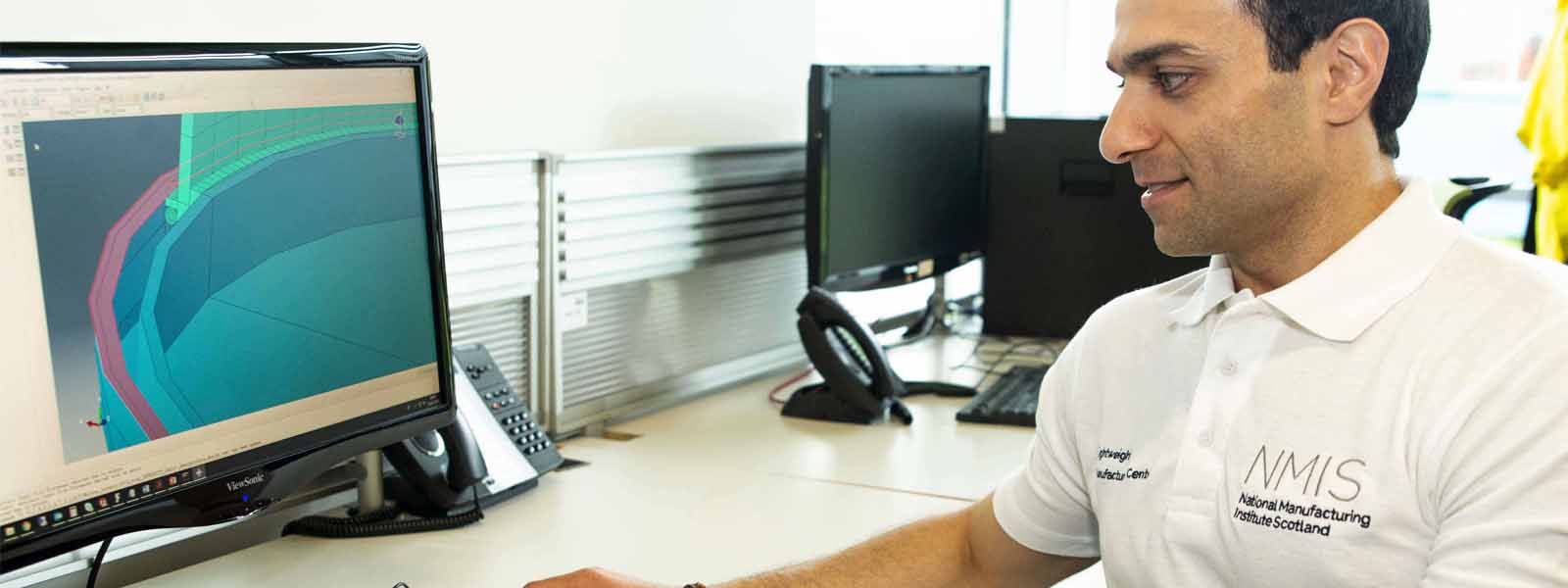Wielding advanced numerical and analytical tools, our experienced team of modellers allow us to try out manufacturing processes in the virtual world, which saves costs and resources on physical trials.
Process modelling also allows us to visualise situations where we don’t have line of sight, such as the activity in a furnace, while providing answers to critical questions, from ‘is this possible?’ to ‘can we speed this up?’
Typically involving a complex and evolving sequence of events, modelling and simulation of manufacturing processes is challenging. Material behaviour is complex too; it is often hot and undergoing complicated deformations. Much of our success in this area is down to the skill of our modellers. They figure out what parameters are important, interpret results and drive decision-making based on the model.
In a unique position where we can construct our own algorithms and implement our own code, we can also tap into our materials characterisation expertise to define model parameters, before validating the data on our very own industrial equipment.
Process parameter definition
Defining the optimal parameters for manufacturing processes, whether that is time, pressure, force or temperature boosts product quality, efficiency and productivity. It is especially critical for processes such as superplastic forming (SPF), hydroforming, radial forging, flow forming, rotary forging, ring rolling, etc. Using our advanced modelling expertise, we define these process parameters at the outset, achieving the best material performance and eliminating wasted resources, such as time, money and material, during customer trials.
Structural and mechanical integrity
Structural and mechanical integrity are crucial when designing products and components used across high pressure, high temperature environments. We work with industry clients of all sizes to perform accurate numerical and analytical studies, involving fracture and damage criteria. We can also employ fatigue or creep analyses when necessary.
Expertise in various FE commercial software
Our modellers are at the cutting edge of developments in FE software and their experience is vast, covering general and dedicated commercial software, such as Abaqus, Deform, NxT Forge, QForm, Simufact and PamStamp. As a research centre, we believe firmly in continued learning and our modellers are constantly enhancing their expertise and sharing ideas through seminars and relationships with key software developers.
In-house code development
Our in-house code development expertise complements our commercial software, allowing us to get the very best from it. We perform this widely across customer projects with our in-house code used in advanced FE analysis. Examples include complex material models implemented in Fortran user material subroutines and FE pre and post processing scripts coded in Matlab and Python.
Microstructural modelling
Material microstructure defines the final operational properties and quality of forged parts. We benefit from performing both industrial forging trials and mechanical and microstructural analysis under one roof. This microstructural modelling includes calibration of FE and microstructural models, benchmarking of available models and development of new models for advanced materials. Different types of microstructural modelling we perform include phenomenological modelling (JMAK-type models), coupled modelling and multi-scale modelling (full-field modelling DigiMu and crystal plasticity).
Residual stress modelling and simulation
In support of our world leading materials behaviour capability, we can specifically design tests that replicate manufacturing conditions, extending to modelling and prediction of residual stress during manufacturing. This allows us to improve the control of material characteristics and behaviours, offering important cost saving, part quality and efficiency boosting results for our customers.
High Performance computing for complex models
Some of the numerical modelling problems that we tackle are extremely complex. Flow forming, ring rolling and multi-scale microstructural models, for example, require high computational resources, such as the number of cores and amount of memory etc. Partnership with the ARCHIE-WeSt supercomputer allows us to make simulations any level of complexity and offer this service to our customers. A regional supercomputer centre at the University of Strathclyde, it comprises of over 2500 INTEL Skylake 6138 cores for distributed parallel computing, two 3TB RAM large memory nodes and 210TB of high performance GPFS storage.
